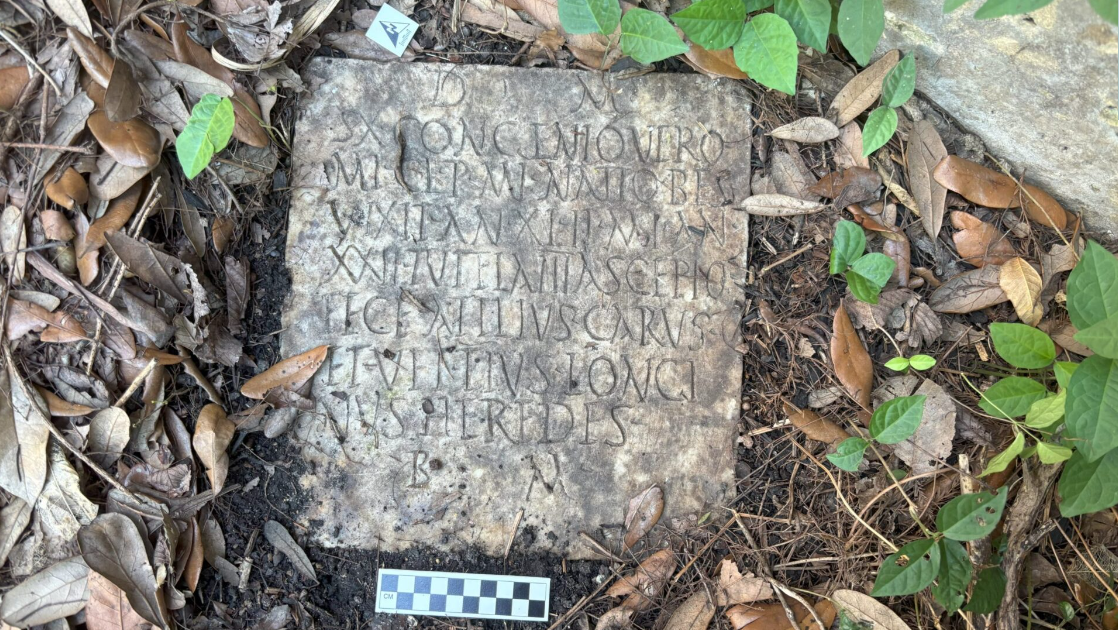How a 2nd-Century Headstone Became Louisiana Lawn Décor
It’s not every day you find a 2nd-century Roman tombstone while trimming the hedges — but this is New Orleans, where time and logic both sweat through their shirts before noon.
When Tulane anthropologist Daniella Santoro and her husband Aaron Lorenz started clearing the undergrowth behind their Carrollton home, they weren’t expecting to uncover a marble slab honoring Sextus Congenius Verus, a Roman sailor who’s been dead since before anyone invented gumbo.
The inscription, carved around the year 150 A.D., reads like the kind of Latin you’d see in a museum, not behind a shotgun house:
“To the Spirits of the Dead for Sextus Congenius Verus, soldier of the praetorian fleet Misenensis, from the tribe of the Bessi, who lived 42 years and served 22 in the military.”
The man lived, served, died, and apparently — took a 5,000-mile detour to a backyard off Cambronne Street.
From the Roman Navy to the Mississippi Delta
When Santoro called archaeologist D. Ryan Gray at the University of New Orleans, the first thought was obvious: please don’t tell us we’re sitting on an ancient cemetery.
Nope. It turns out to be something even weirder.
After a round of academic phone-a-friend — including Tulane’s Dr. Susann Lusnia and the University of Innsbruck’s Harald Stadler — the team realized the inscription matched one that had been missing from a museum in Civitavecchia, Italy, since World War II.
That’s when the story went full Indiana Jones — minus the whip, plus the FBI Art Crime Team.
“Team Tombstone” and the Great Repatriation
Santoro dubbed her group of accidental sleuths Team Tombstone. Picture a bunch of professors with coffee breath, squinting at marble in a Mid-City driveway while someone calls the FBI.
Their mission: to return the headstone to Italy.
The feds stepped in, took custody of the artifact, and started the process of returning it to its rightful home — where museum staff are reportedly planning a celebration for the soldier’s belated homecoming.
Imagine that: a man who has been dead for nearly two millennia receives a better welcome than most returning veterans.
The Big Question: How Did It Get Here?
No one knows for sure. The working theory is that it came stateside sometime after WWII, maybe scooped up by a souvenir-hunting soldier when Civitavecchia’s museum was destroyed in Allied bombings.
Frank Simon, who owned the Cambronne Street home from 1909 until his death in 1945, doesn’t fit the profile. Neither do his daughters. The Navy vet next door? Deployed to the Pacific. Dead end.
It could have been bought from an antique dealer, passed down through a family, or literally used as a garden stone by someone who thought, “Hey, this marble chunk will keep my azaleas from washing out.”
Only in New Orleans could a 2,000-year-old Roman headstone spend half a century as backyard décor.
source: Preservation Resource Center of New Orleans/Dr. Ryan Gray
photo courtesy: D. Ryan Gray/Preservation Resource Center of New Orleans
